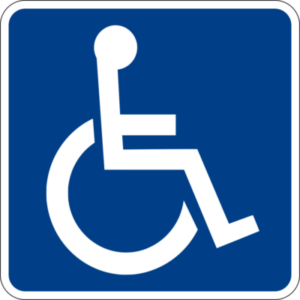By Judy Okite.
When the COVID-19 pandemic was first announced in Kenya, in March 2020, there was panic as the news showed the effects of curfews, with the closing of offices, businesses, and schools. Three days after the initial announcement on the first COVID-19 infections, the Kenyan President announced measures to curb the spread of the virus. Among them was the adoption of cashless transaction payments and the general adoption of remote virtual work.
These measures emphasised the problem of digital accessibility in Kenya. Digital accessibility is commonly defined as the ability of a website, mobile application, or electronic document to be easily navigated and understood by a wide range of users, including those users who have visual, auditory, motor, or cognitive disabilities.
For example, in the Presidential briefing, sign language interpretation was not available. Following an outcry by the affected community, television stations were ordered to integrate sign language interpreters in their broadcasts while relaying Covid-19 related information. However, these broadcasts via online platforms like YouTube did not have sign language, and it was necessary to turn closed captioning on.
This example expresses a broader problem, despite Kenya’s credentials as one of the top tech-savvy countries globally. Persons with disabilities in the country still struggle with accessing basic information online or via the use of local apps, given the way these platforms have been built with little consideration to accessibility features.
There are exceptions to this trend. Safaricom, for example, is a mobile phone company in Kenya that has been making an effort in improving accessibility. In 2018, it developed a braille format known as Dot Braille Watch, which is an innovation equivalent of a smart gear that displays SMS notifications in braille, hence enabling visually impaired people to read their M-PESA messages independently and conduct financial transactions via their mobile phones. Innovations such as these, however, while an important tool in improving the digital accessibility for persons with disabilities are a very small contribution in a country with over 2 million Persons declared to have one or more forms of disabilities. (Kenya National census 2019).
With COVID-19, it has become apparent that more persons with disabilities will have to not only learn but be able to engage digitally, hence, there is an increasingly pressing need for lasting solutions as opposed to quick fixes.
The National ICT Policy, 2019 on the Accessibility clause clearly states: “The Government will provide an ICT environment fully accessible to persons with disabilities. The Government of Kenya is fully committed to providing equal treatment to people with disabilities with respect to the use and benefit of ICT services, programs, goods, and facilities in a manner that respects their dignity and that is equitable in relation to the broader public.”
In the past two years, there have been growing discussions around digital accessibility and inclusion by different stakeholders, however, the time has come for a wider national multi-stakeholder debate process including, knowledgeable and experienced “Persons with a disability”, in order to tackle accessibility as it affects every sector in the Kenya digital ecosystem.
Such a wide debate process should consider questions within the following lines :
- Are Persons with Disability in Kenya digitally learned?
- Is digital accessibility included or should it be included in the curriculum and at what level, which subject (Certification/ Degree)?
- Does the country have enough digital accessibility experts and, if not, what measures can be put in place to increase this number?
- What are the policies and standards focusing on accessibility and how can the different stakeholders promote their implementation within their stakeholder groups?
- How can Kenya prioritize and institutionalize digital accessibility?
- Can a Multistakeholder, Monitoring, and Evaluation group be set up to oversee this process?
Despite the ongoing efforts, there is still much work that needs to be done to ensure digital accessibility and some of these basic questions are just a starting point. Digital accessibility is not just the right thing to do, it is what must be done to ensure inclusivity for persons with disabilities in all spheres of society. If Kenya, as a nation can realize the importance of digital accessibility and give it the priority that it deserves, then, not only will it set a benchmark for other nations, but inclusion will be the practice both online and offline.
Judy Okite is an Accessibility Auditor and advocates for Accessibility for Persons with Disability both online and offline.
![]()




